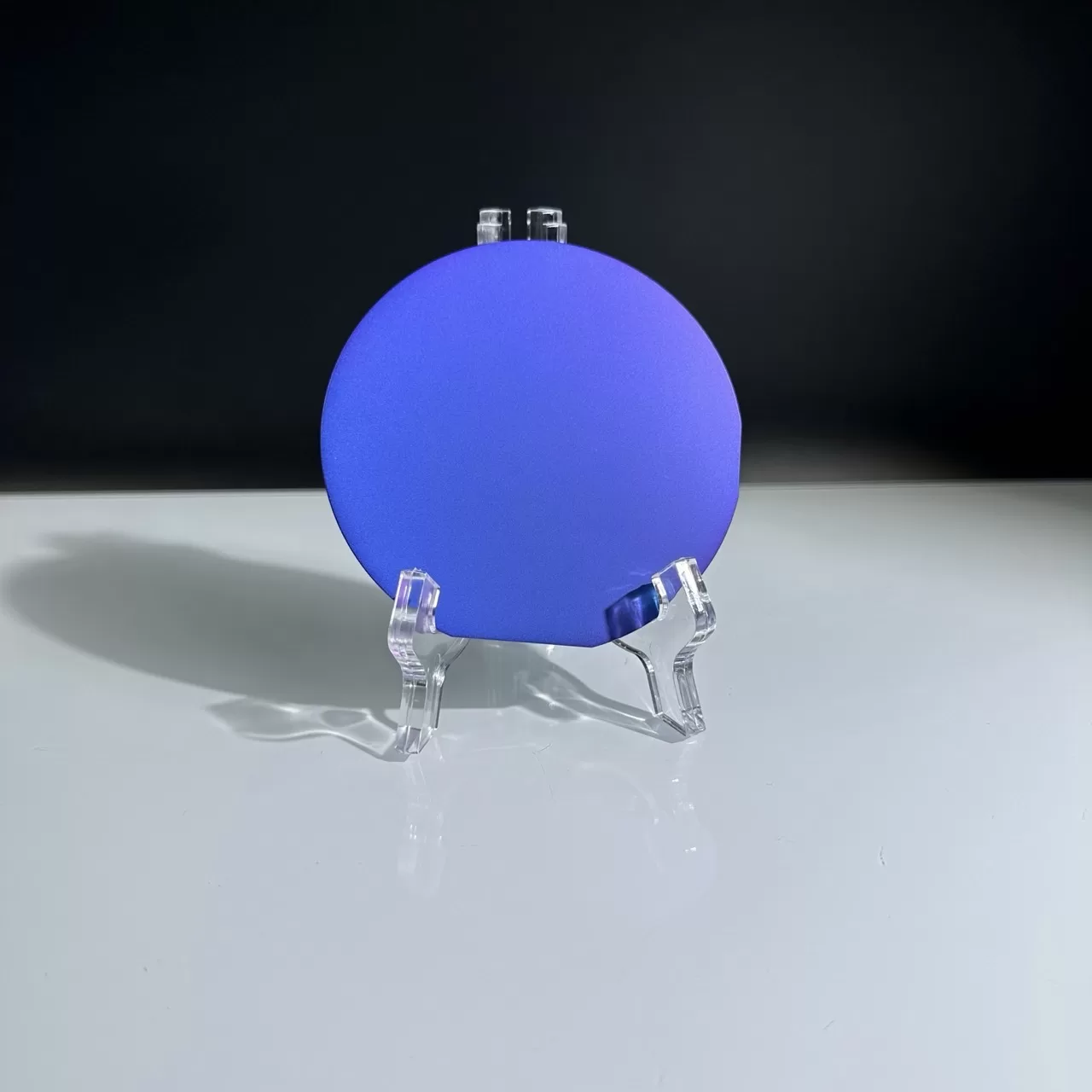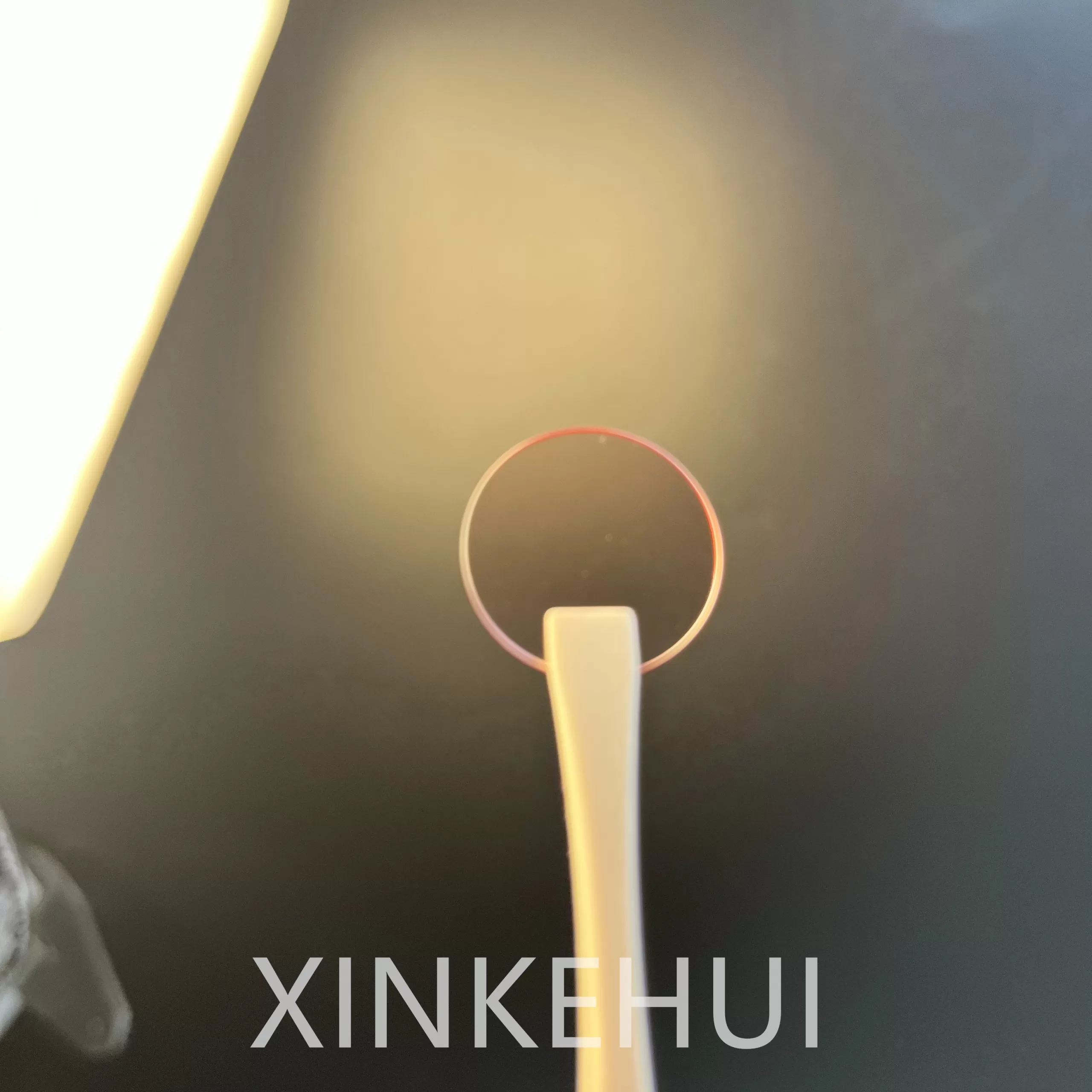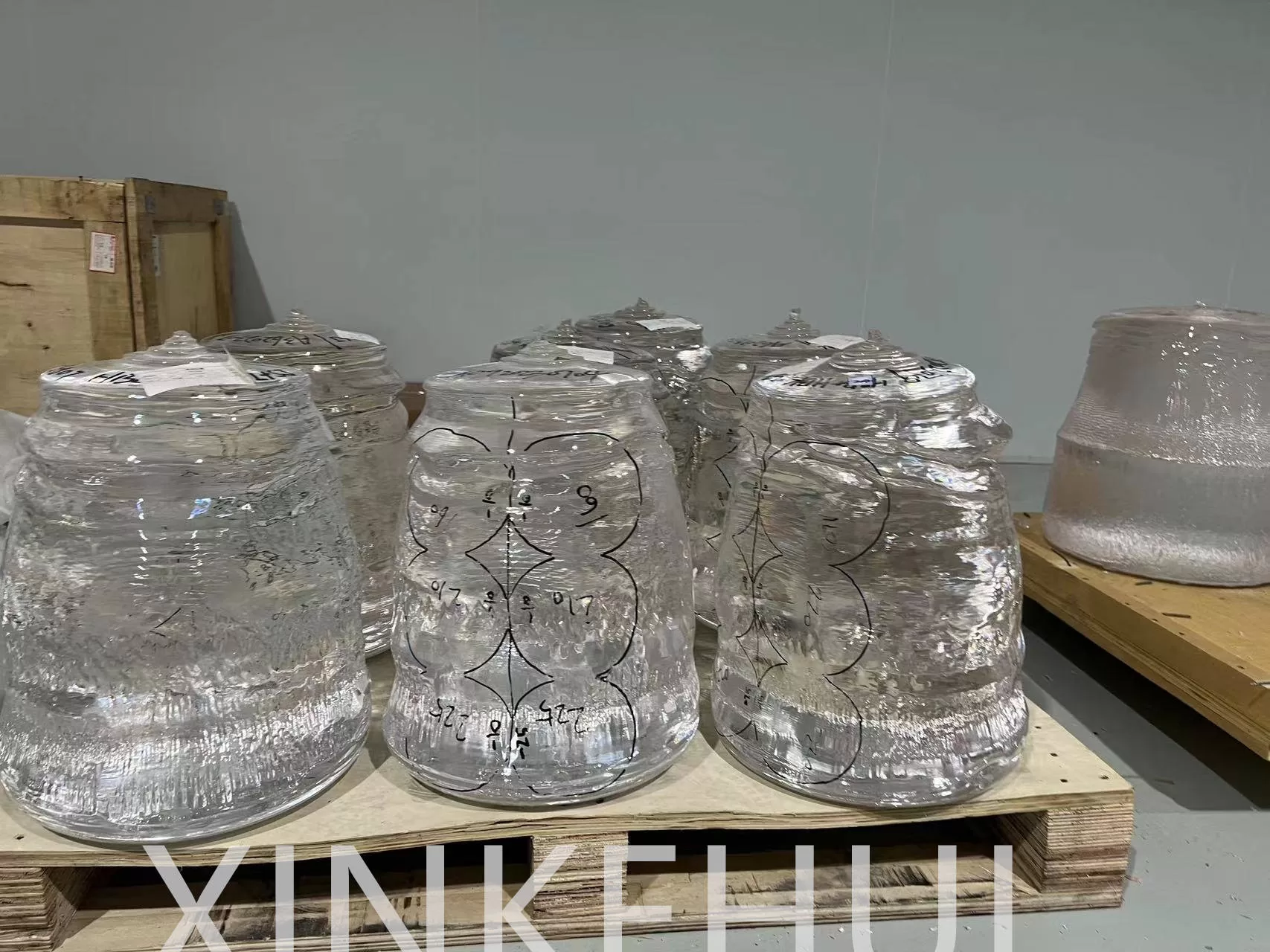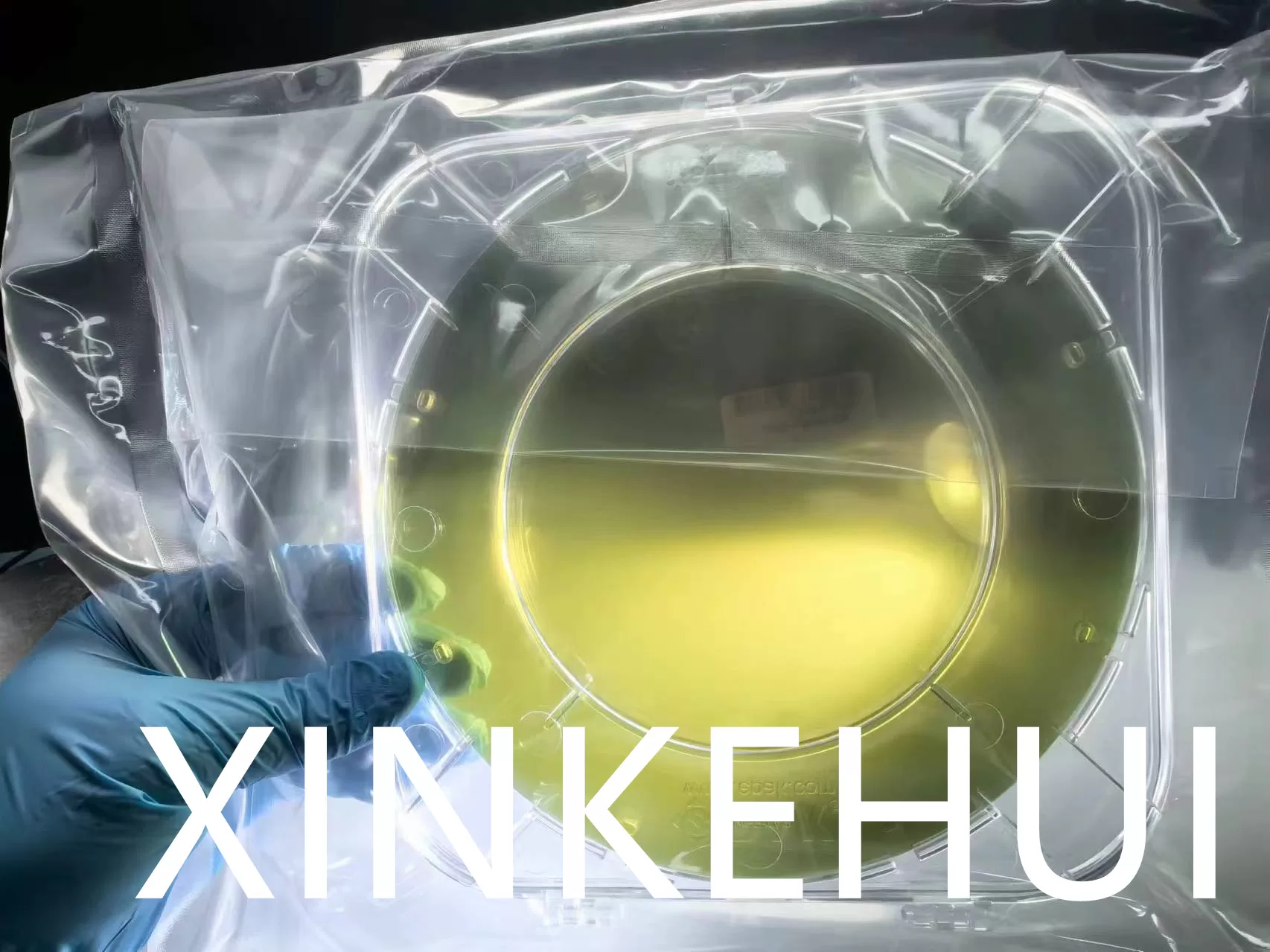CrystalClear Sapphire Optical Windows Exceptional Optical Transparency
- +86138-1617-9243
- [email protected]

Focus on the field of new material !

Sapphire optical windows stand as a pinnacle of engineering excellence, representing a culmination of innovation and precision that transcends conventional boundaries in optical technology. This abstract embarks on a comprehensive exploration of the multifaceted realm of sapphire optical windows, delving into their exceptional properties, intricate manufacturing processes, and broad-ranging applications. From their unparalleled optical transparency and mechanical resilience to their thermal stability and chemical inertness, sapphire optical windows epitomize a harmonious amalgamation of attributes that not only drive innovation but also enable transformative advancements across a diverse spectrum of industries. Through this in-depth analysis, we endeavor to shed light on the transformative potential of sapphire optical windows, illuminating their pivotal role in shaping the trajectory of optical systems and technologies in the modern era.
At the core of sapphire optical windows lies an exceptional optical transparency that spans a broad spectrum of wavelengths, ranging from ultraviolet to infrared. This unparalleled transparency allows for the efficient transmission of light, rendering sapphire optical windows indispensable in applications necessitating precise optical performance, including imaging systems, spectroscopy, and laser technology. Furthermore, sapphire’s innate mechanical robustness, characterized by its remarkable hardness and scratch resistance, positions these windows as stalwart guardians against wear and tear, ensuring longevity and reliability even in the most demanding environments.
In addition to their optical and mechanical prowess, sapphire optical windows exhibit outstanding thermal stability, capable of withstanding elevated temperatures without compromising their structural integrity or optical performance. This thermal resilience makes them ideal candidates for use in high-temperature environments encountered in thermal imaging, laser systems, and industrial processes. Moreover, sapphire’s inherent chemical inertness confers upon these windows a resistance to corrosion and chemical degradation, bolstering their durability and enabling their deployment in chemically harsh environments without compromise.
The manufacturing intricacies of sapphire optical windows further underscore their exceptional quality and precision. Leveraging advanced fabrication techniques, such as precision machining and polishing, manufacturers can achieve windows with tight dimensional tolerances and pristine surface finishes, ensuring optimal optical performance and minimal surface defects. This precision craftsmanship enables sapphire optical windows to meet the stringent requirements of cutting-edge optical systems, driving innovation and setting new benchmarks for optical excellence.
The applications of sapphire optical windows span a diverse array of industries, encompassing aerospace, defense, semiconductor manufacturing, medical devices, and scientific research. From facilitating thermal imaging and laser systems to enhancing optical sensors and spectroscopy, sapphire optical windows play an integral role in enabling critical advancements across various domains. As research and development efforts continue to push the boundaries of optical technology, the potential applications of sapphire optical windows are poised for further expansion and refinement, unlocking new possibilities and driving progress in optical systems and technologies.
In conclusion, sapphire optical windows epitomize the pinnacle of engineering achievement, embodying a harmonious blend of exceptional properties and precision craftsmanship that transcend traditional boundaries in optical technology. Their unrivaled optical transparency, mechanical resilience, thermal stability, and chemical inertness position them as indispensable components in modern optical systems, driving innovation and enabling transformative advancements across industries. As we navigate the ever-evolving landscape of optical technology, sapphire optical windows will continue to illuminate the path forward, shaping the future of optical systems and technologies with their transformative potential and unwavering excellence.
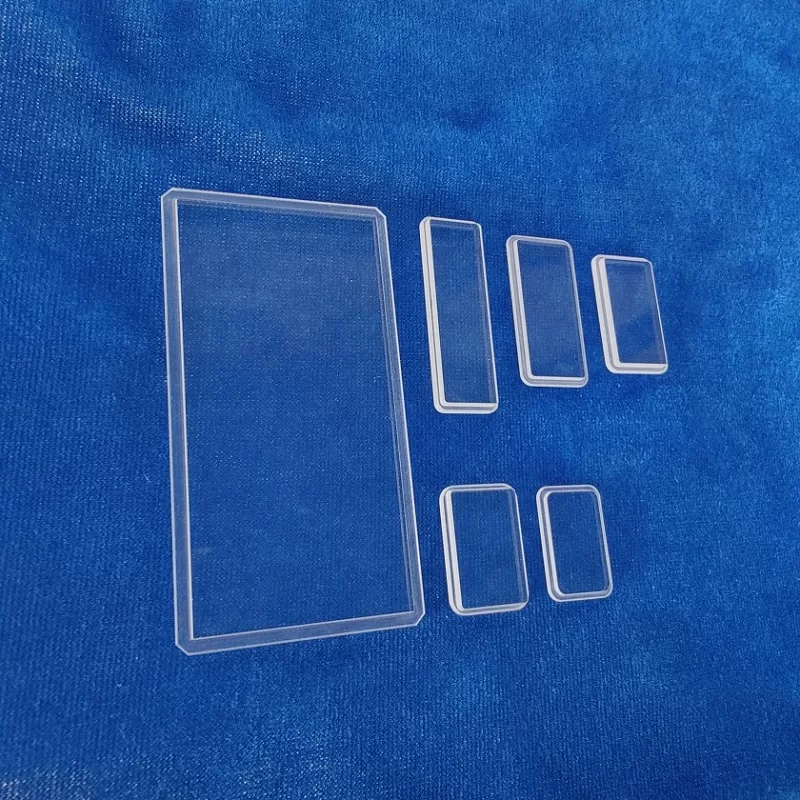
| Material: | Sapphire Optical Grade | Orientation: | C-axis |
|---|---|---|---|
| Surface S/D: | DSP 40/20 | Tolerance: | ±0.05mm |
| Application: | Vacuum Equipment Window | Grade: | Optical Grade Without Bubble;color |
| Transmittance: | >80% | Material: | Sapphire,BK7,UV Fused Silica |
| Shape: | Plano,square,rectangular Or Customer Shape | Usage: | Optical,high Temperature View Equipment Glass,protection Window For Gas And Air Analyzer |
| Surface Quality: | 60/40,40/20,80-50 To 10-5 Scratch/Dig | Product Name: | Optical Circular Sapphire Quartz Windows,HS BK7 Windows Fused Silica Windows Sapphire Windows Optical Windows,Sapphire Optics,Sapphire Window,sapphire Glass Disks Winows |
| Diameter: | 1-300.0 Mm | Coating: | Golden Or Customer Request. |
| Color: | Transparent | Clear Aperture: | >90% |
| Name: | Sapphire Optical Glass Lens Polishing Glass Wafer,Sapphire Window / Optical Sapphire Window / Sapphire Glass Windows,wholesale OEM Sapphire Windows For Watches | ||
| High Light: | Customized Laser Cut Glass Sapphire Crystal, | ||
Sapphire optical windows, revered for their exceptional properties and versatile characteristics, find applications across a wide spectrum of industries, driving innovation and enabling advancements in optical technology. This comprehensive analysis delves into the diverse and extensive range of applications where sapphire optical windows play a pivotal role. From aerospace and defense to semiconductor manufacturing, medical devices, and scientific research, sapphire optical windows continue to demonstrate their transformative potential, shaping the landscape of modern optical systems and technologies. Through this exploration, we aim to illuminate the multifaceted applications of sapphire optical windows, showcasing their versatility, reliability, and performance across various domains.
In conclusion, sapphire optical windows play a diverse and integral role across a wide range of technological applications, spanning industries from aerospace and defense to semiconductor manufacturing, medical devices, scientific research, consumer electronics, energy technologies, and environmental monitoring. Their exceptional properties, including optical transparency, mechanical strength, thermal stability, and chemical inertness, make them indispensable components in modern optical systems and technologies. As research and innovation continue to drive advancements in optical technology, the applications of sapphire optical windows are poised to expand further, unlocking new possibilities and driving progress in various domains.

Sapphire optical windows stand as exemplars of engineering excellence, characterized by a remarkable combination of properties that make them indispensable components in a wide range of optical applications. This comprehensive analysis delves into the multifaceted realm of sapphire optical windows, exploring their exceptional properties that underpin their versatility, reliability, and performance across diverse industries.
From their unrivaled optical transparency and mechanical robustness to their thermal stability and chemical inertness, sapphire optical windows embody a harmonious blend of attributes that drive innovation and enable advancements in optical technology. Through this exploration, we aim to shed light on the exceptional properties of sapphire optical windows, elucidating their fundamental characteristics and their profound impact on the landscape of modern optical systems and technologies.
In summary, the significance of sapphire optical windows in modern optical systems and technologies cannot be overstated. Their exceptional properties, spanning optical transparency, mechanical robustness, thermal stability, chemical inertness, electrical insulation, uniformity, surface quality, and resistance to abrasion, collectively position them as indispensable components across a diverse spectrum of applications. As we delve deeper into the intricacies of their properties, it becomes evident that sapphire optical windows are not just passive components but active enablers of innovation and progress in optical technology.
Beginning with their exceptional optical transparency, sapphire optical windows serve as conduits for light across a wide range of wavelengths, facilitating precise imaging, spectroscopy, and laser applications. Their clarity and fidelity in transmitting light play a foundational role in the accuracy and reliability of optical systems, from scientific research instruments to medical imaging devices and aerospace sensors.
Moreover, the mechanical strength of sapphire optical windows, derived from their remarkable hardness and scratch resistance, ensures their resilience in harsh operating conditions. Whether subjected to high-speed airflow in aerospace applications, abrasive particles in industrial environments, or mechanical stress in consumer electronics, sapphire windows stand firm, safeguarding sensitive optical components and preserving optical performance over time.
The thermal stability of sapphire optical windows further enhances their utility, enabling them to withstand extreme temperatures without compromising their structural integrity or optical properties. This resilience to thermal fluctuations is invaluable in applications such as thermal imaging, laser systems, and high-temperature industrial processes, where precision and reliability are paramount.
Chemical inertness is another key attribute of sapphire optical windows, ensuring their resistance to corrosion and chemical degradation in harsh environments. Whether exposed to corrosive gases in semiconductor manufacturing or aggressive solvents in medical instrumentation, sapphire windows maintain their integrity, providing a stable platform for optical systems to operate effectively.
Furthermore, the electrical insulation properties of sapphire optical windows make them ideal candidates for use in electronic and optoelectronic devices, where electrical isolation is essential for preventing interference and ensuring signal integrity. This property enhances the reliability and safety of optical systems in a wide range of applications, from telecommunications to high-speed data transmission.
The uniformity and surface finish of sapphire optical windows contribute to their optical performance and consistency, ensuring minimal distortion and light scattering. This precision in manufacturing enables sapphire windows to meet the stringent requirements of advanced optical systems, where deviations in optical quality can compromise performance and accuracy.
Lastly, the resistance to abrasion and wear exhibited by sapphire optical windows prolongs their operational lifespan, reducing maintenance requirements and enhancing overall reliability. In applications where exposure to mechanical abrasion or environmental wear is unavoidable, such as outdoor surveillance systems or industrial monitoring devices, sapphire windows provide enduring protection and performance.
In conclusion, the unique combination of properties exhibited by sapphire optical windows positions them as indispensable components in the ever-evolving landscape of optical technology. As research and development efforts continue to advance, sapphire optical windows are poised to drive innovation and enable breakthroughs across various industries, from aerospace and defense to healthcare, telecommunications, and beyond. Their reliability, performance, and longevity make them not just components but catalysts for progress, shaping the future of optical systems and technologies in profound and transformative ways.
Sapphire is ideal for use as a window where high radiation resistance is required from the UV to about 5µm. It can be used to form doublet lenses with Silicon and Zinc Selenide for the MWIR (3 to 5µm).
Sapphire windows are optical windows made from synthetic sapphire, a single-crystal form of aluminum oxide (Al2O3). Sapphire is a hard, durable, and scratch-resistant material, which makes it an ideal choice for use in high-stress environments and applications where optical clarity is critical.
A sapphire window is a transparent optical element made from synthetic sapphire crystal, which is a form of aluminum oxide (Al2O3). Sapphire windows are highly valued for their exceptional optical properties, including high transparency over a wide range of wavelengths, excellent hardness (second only to diamond), resistance to scratching and abrasion, and high thermal conductivity. These properties make sapphire windows ideal for various applications in industries such as aerospace, defense, electronics, and optics, where durability and optical clarity are critical requirements. They are commonly used as protective covers for sensors, detectors, cameras, and lasers in harsh environments where other materials might degrade or fail.
Sapphire is extremely strong and scratch resistant – making it the top choice for a fine timepiece. While sapphire is the more expensive of the three crystal choices, it has its advantages due to the scratch and shatter resistance.
Sapphire glass is highly resistant to shattering compared to other types of glass, thanks to its exceptional hardness and toughness. It is one of the hardest materials available, second only to diamond on the Mohs scale of mineral hardness. This means that it is highly resistant to scratches, abrasion, and impacts, reducing the likelihood of shattering or breaking under normal conditions.
However, while sapphire glass is very durable, it is not completely immune to shattering. Extreme forces or impacts could potentially cause it to fracture, particularly if it has imperfections or defects. Additionally, despite its hardness, sapphire glass can still be brittle under certain conditions, such as extreme temperature variations or sudden, intense impacts.
Overall, while sapphire glass is highly resistant to shattering compared to regular glass, it is not entirely indestructible and may still break under extreme circumstances.
